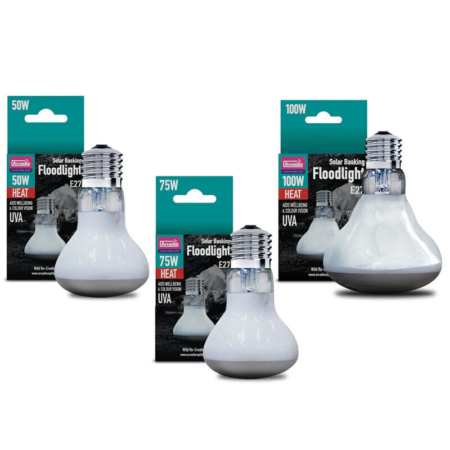6 X Diamond Rosy Barbs – Pethia Conchonius – Cyprinid Fish
£10.65
10 X Diamond Rosy Barbs – Pethia Conchonius – Cyprinid Fish: Beautiful and lively fish with diamond-like scales, perfect for aquarium enthusiasts. Secure transit and shipping convenience available. Dead on Arrival (DOA) policy ensures customer satisfaction. Scientifically known as Pethia Conchonius, these vibrant fish are native to India and prefer slow-moving waters with vegetation. A well-maintained aquarium with live plants, rocks, and driftwood is recommended. They are omnivorous and should be fed a balanced diet. These fish can grow up to 3-4 inches and have a moderate growth rate. They are peaceful but may display aggression towards their own species. Suitable for both beginner and experienced aquarists. Breeding and reproduction possible in captivity. Hardy and resistant to diseases with proper care. Optimal water conditions include slightly acidic to neutral water with a pH range of 6.5-7.5 and a temperature of 72-79°F. Lifespan of 5-7 years. A popular choice for community aquariums.
1001 in stock
Attributes: 10 X Diamond Rosy Barbs – Pethia Conchonius – Cyprinid Fish
Short Description: Beautiful and lively fish with diamond-like scales, perfect for aquarium enthusiasts.
Product Categories: Fish, barb
Secure Transit: Our 24-hour courier service ensures your fish arrive safely with poly boxes and heat packs during colder months.
Shipping Convenience: Combine multiple items in one order to streamline shipping.
Dead on Arrival (DOA) Policy: Should any fish arrive deceased, promptly inform us with photographic evidence, and we will refund you or send you a replacement.
Product Description:
Scientific and Common Names: The Diamond Rosy Barb, scientifically known as Pethia Conchonius, is a vibrant and eye-catching fish that belongs to the Cyprinid family. It is also commonly referred to as the Red Barb or the Rosy Barb.
Habitat: These fish are native to the freshwater rivers and streams of India, specifically found in the rivers of Kerala and Karnataka. They prefer slow-moving waters with plenty of vegetation.
Tank Setup: To provide a suitable habitat for the Diamond Rosy Barbs, a well-maintained aquarium with a minimum capacity of 20 gallons is recommended. The tank should be decorated with live plants, rocks, and driftwood to mimic their natural environment. A sandy substrate is preferred, and the tank should have a tight-fitting lid to prevent jumping.
Diet and Nutrition: Diamond Rosy Barbs are omnivorous and will readily accept a variety of foods. Their diet should consist of high-quality flakes or pellets as a staple, supplemented with live or frozen foods such as brine shrimp, bloodworms, and daphnia. It is important to provide a balanced diet to ensure their optimal health and vibrant coloration.
Size and Growth Rate: These fish can grow up to 3-4 inches in length, with males typically being slightly larger than females. They have a moderate growth rate and can reach their full size within a year.
Behavioral Traits: Diamond Rosy Barbs are known for their active and lively nature. They are peaceful fish that can be kept in community aquariums with other peaceful species. However, they may display some aggression towards their own species, especially during breeding or territorial disputes. It is recommended to keep them in groups of at least 6 individuals to minimize aggression.
Care Level: These fish have a moderate care level and are suitable for both beginner and experienced aquarists. Regular water parameter monitoring, proper feeding, and maintaining a clean aquarium are essential for their well-being.
Breeding and Reproduction: Diamond Rosy Barbs are egg-layers and can be bred in captivity. To encourage breeding, a separate breeding tank with fine-leaved plants and a spawning mop is recommended. The water temperature should be slightly increased, and the lighting should be dimmed. The female will scatter her eggs among the plants, and the male will fertilize them. After spawning, the adults should be removed to prevent them from eating the eggs. The eggs will hatch in about 24-48 hours, and the fry can be fed with infusoria or commercially available fry food.
Health and Disease Prevention: These fish are generally hardy and resistant to diseases if provided with proper care. Regular water changes, maintaining good water quality, and avoiding overfeeding are crucial for their overall health. It is recommended to quarantine new fish before introducing them to an established aquarium to prevent the spread of diseases.
Optimal Water Conditions: Diamond Rosy Barbs prefer slightly acidic to neutral water with a pH range of 6.5-7.5. The water temperature should be maintained between 72-79°F (22-26°C). They appreciate a well-filtered aquarium with moderate water flow.
Lifespan: With proper care, Diamond Rosy Barbs can live for 5-7 years, although some individuals have been known to live longer.
Additional Interesting Facts: Diamond Rosy Barbs are known for their striking appearance, with males displaying vibrant red coloration and diamond-like scales. They are active swimmers and enjoy exploring their surroundings. These fish are also known to jump, so a secure lid is essential. Their peaceful nature and beautiful colors make them a popular choice for community aquariums.














Reviews
There are no reviews yet.